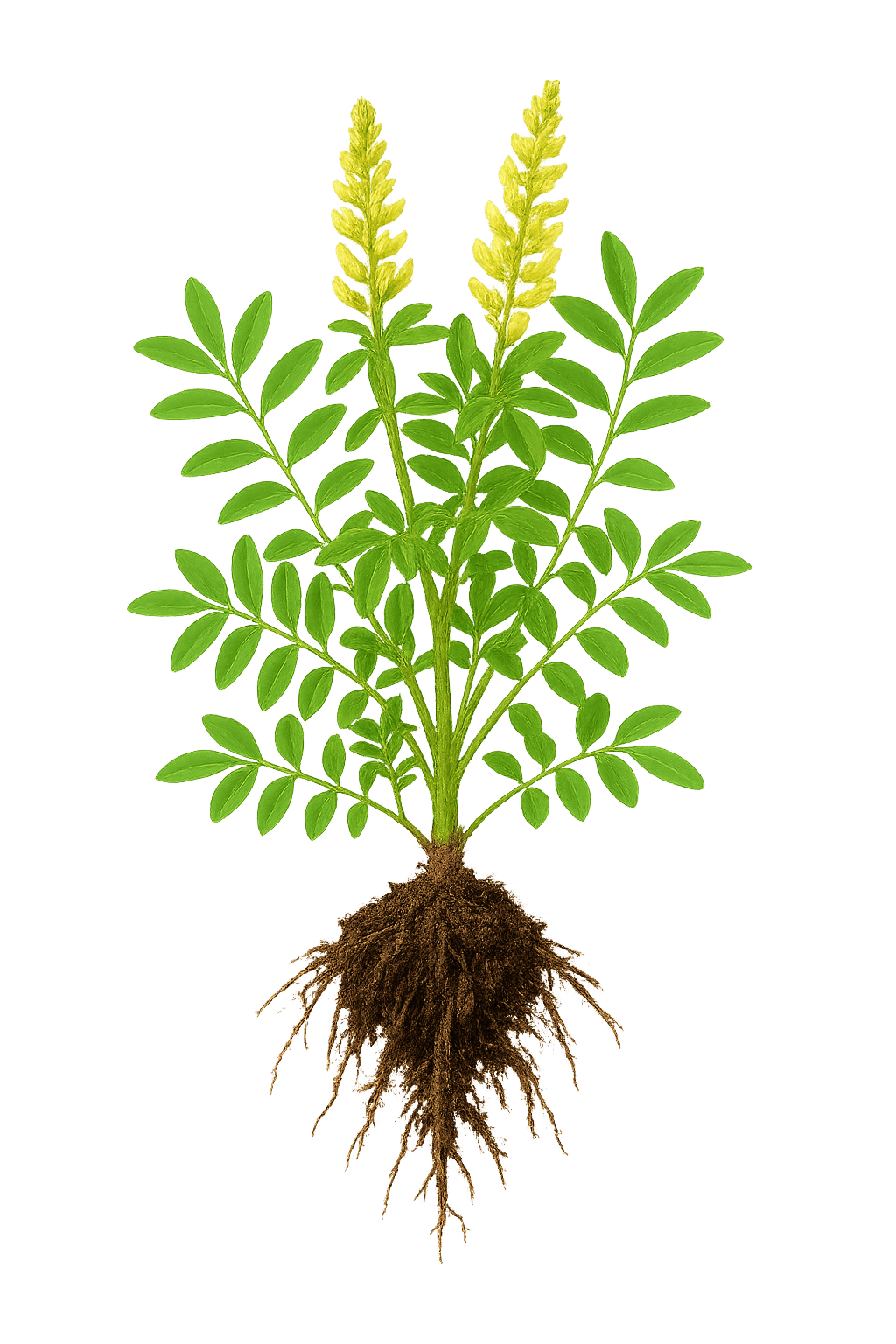Astragalus
Astragalus Detailed Encyclopedia
Astragalus is a commonly used qi-tonifying Chinese medicinal herb, known as the best qi tonic, with effects of tonifying qi and raising yang, consolidating exterior and stopping sweating, promoting urination and reducing edema, expelling toxins and draining pus. Mainly distributed in Inner Mongolia, Shanxi, and Gansu of China, it is one of the most important qi-tonifying herbs in traditional Chinese medicine.

Basic Information
Family:Fabaceae
Scientific Name:Astragalus membranaceus
Origin:Inner Mongolia, Shanxi, Gansu, Heilongjiang of China
Harvest Period:Autumn (September-October)
Growth Years:3-4 years
Plant Height:50-100 cm
Morphological Characteristics
Leaves:Odd-pinnate compound leaves with 12-18 pairs of leaflets, elliptic
Flowers:Raceme inflorescence, yellow or pale yellow flowers, blooming June-August
Roots:Thick and long taproot, cylindrical, yellowish-brown outer skin, fleshy
Stem:Erect with fine ridges, covered with white soft hairs
Growth Environment
Soil Requirements:Deep fertile sandy loam, pH 7.0-8.0
Water Requirements:Drought-tolerant, moderate watering during growth, avoid waterlogging
Light Requirements:Sun-loving, requires full sunlight
Temperature Requirements:15-25°C, strong cold tolerance, can withstand -30°C
Humidity Requirements:Relative humidity 50-70%
Classification & Varieties
Main Varieties
Processing Types
💊 Medicinal Value
Nature & Taste:Sweet, slightly warm
Meridian:Enters Spleen, Lung meridians
Main Efficacies
- •Tonifies qi and raises yang, suitable for qi deficiency and fatigue, middle qi sinking, prolapse, uterine prolapse
- •Consolidates exterior and stops sweating, improves exterior deficiency spontaneous sweating, qi deficiency external contraction
- •Promotes urination and reduces edema, treats qi deficiency edema and difficult urination
- •Expels toxins and drains pus, improves sores difficult to ulcerate or heal
- •Enhances immunity, improves body's disease resistance
Active Ingredients
📖 Usage Methods
Dosage
- •Decoction: 9-30g, large dose up to 60g
- •Powder: 3-5g
- •Stew: Simmer with meat to tonify qi and nourish blood
- •Tea: Slice and steep in water
⚠️ Contraindications
- •Use with caution in exterior excess evil, qi stagnation and dampness obstruction
- •Use with caution in yin deficiency with yang hyperactivity
- •Pregnant women use under medical supervision
- •Children use in moderation
🌱 Cultivation Techniques
Cultivation Points
- •Select sunny slope with good drainage
- •Deep tillage 40-50cm, apply sufficient base fertilizer
- •Spring or autumn sowing, row spacing 30-40cm
- •Timely weeding, top dressing 2-3 times
Common Pests & Diseases
Prevention Measures:Select disease-resistant varieties, rational crop rotation, avoid continuous cropping
Treatment Methods:Spray carbendazim or mancozeb at early stage
✂️ Harvest & Processing
Harvest Timing:Autumn September-October, harvest after 3-4 years of growth
Harvest Method:Dig up roots, remove stems and fibrous roots
Processing Methods
- •Raw astragalus: Wash, slice and sun-dry
- •Honey-fried astragalus: Honey-fried to enhance qi-tonifying effect
- •Stir-fried astragalus: Stir-fried before use
Storage:Store in cool, dry place, prevent moisture, insects and mold
🏛️ Cultural Value
History:Astragalus has been used for over 2000 years, listed as superior grade in Shennong's Classic of Materia Medica
Symbolism:Symbolizes vital energy and robust health
Gift Culture:Traditional qi-tonifying gift for the weak
Modern Research:Modern research confirms immune-enhancing, anti-fatigue, and cardiovascular-protecting effects
Market Value:Inner Mongolia astragalus is of excellent quality, an important medicinal material and export commodity